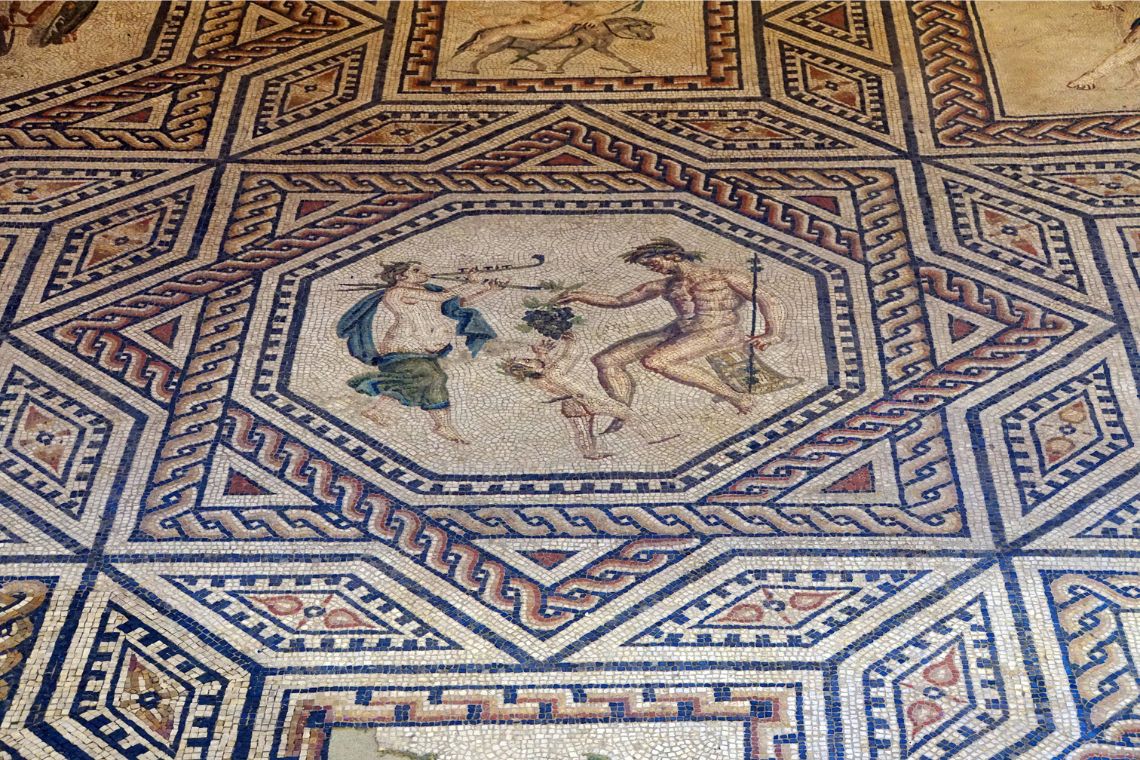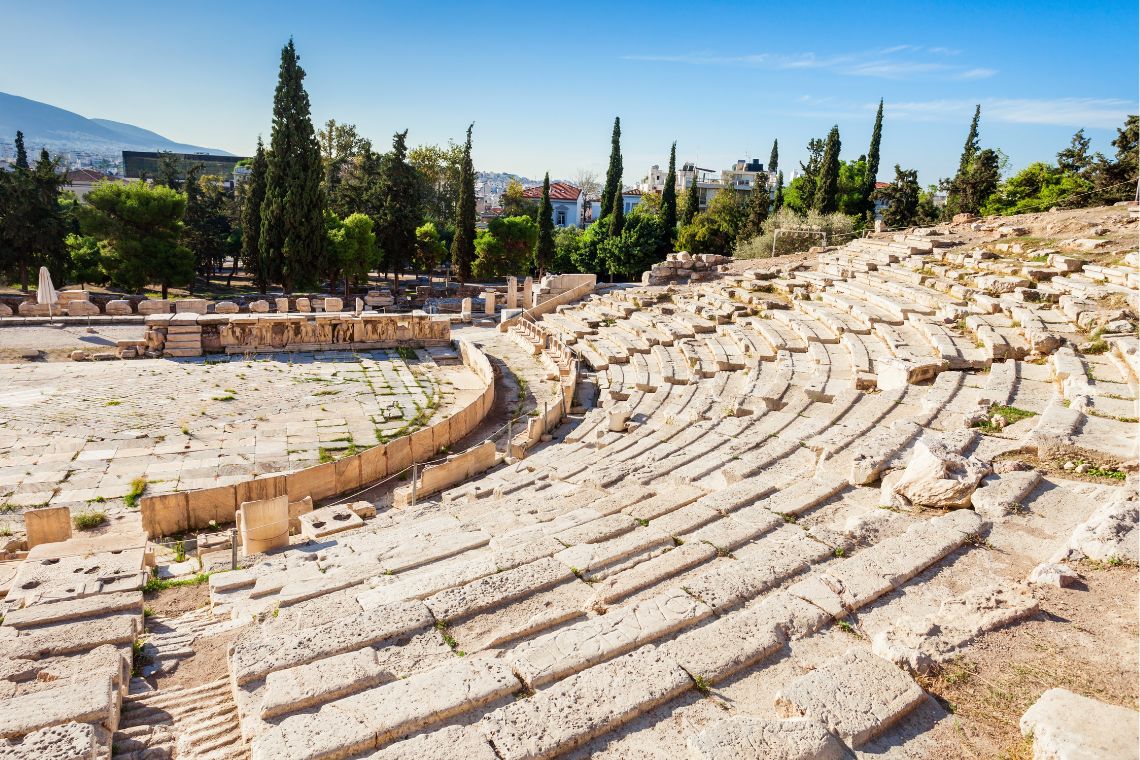5-Day Percy Jackson Mythology Trip
Dionysus God: Symbols and Powers
Dionysus is often depicted with a range of symbols, including the thyrsus, grapevine, and leopard. The thyrsus is a staff topped with a pine cone, often entwined with ivy. It represents fertility, prosperity, and connection to nature, as ivy was believed to protect grapevines and promote their growth.
The grapevine is another central symbol associated with Dionysus, as he is the god of wine-making, orchards, and fruit. Grapes and vine leaves are therefore commonly used to signify his presence and powers. Dionysus is known to bring joy and happiness but can also invoke intense emotions such as rage and even brutality.
Leopards, associated with strength and agility, are also linked to Dionysus. In one myth, Dionysus transformed into a lion and caused a group of pirates to jump into the sea, where he then turned them into dolphins. Leopards, as fierce creatures, represent his wild and untamed side, while also symbolizing his ability to shape-shift and protect himself.
Dionysus' Powers and Abilities
As the god of wine and festivity, Dionysus' powers include the ability to induce ecstasy and madness in both mortals and gods. This aspect of his persona has made him a popular figure in theater, as he is often seen as a champion of free expression, creativity, and emotional release.
Dionysus is also known for his power of prophecy, as shown in the myth of King Pentheus of Thebes. In this story, Dionysus induced madness in the king, forcing him to dress as a woman and climb a tree to spy on a group of drunken women. The women, led by Dionysus, eventually discovered King Pentheus and tore him limb from limb.
Additionally, Dionysus possesses powers of shape-shifting and transformation, as demonstrated by his turning pirates into dolphins and his occasional transformation into a lion or leopard. He also has the ability to grant fertility and abundant harvests, making him a revered figure in ancient agricultural societies.
In conclusion, Dionysus is a complex and multifaceted god with a wide range of symbols and powers. From the thyrsus, grapevine, and leopard to his abilities to induce ecstasy, madness, and prophecy, Dionysus continues to captivate and enthrall those who seek to understand the enigmatic god of wine and festivity.
Dionysus in Art and Literature
 Ancient Roman Dionysus Mosaic - Credits: cascoly/ Canva
Ancient Roman Dionysus Mosaic - Credits: cascoly/ Canva
Depictions of Dionysus in Ancient Greek Art and Sculpture
Dionysus, holds significance in both art and literature. In ancient Greek art, Dionysus was usually depicted accompanied by the following attributes:
- Thyrsos: a staff or wand topped with a pine cone or ivy leaves
- Kantharos: a cup with high handles
- Vines or ivy: representing his connection to vegetation and wine
There are several well-known sculptural renditions of Dionysus. For instance, the Roman copy of the 4th-century BCE statue by Praxiteles exemplifies the god's effeminacy and youthful grace. Another famous depiction is the Dionysus Sardanapalus from the Roman Imperial period, emphasizing the god's sensual and ecstatic aspects.
Dionysus' Influence on Literature and Theater

Theater of Dionysus in Athens, Greece - Credits: Andrey Khrobostov/ Canva
The cult of Dionysus had a profound impact on the development of art and literature in ancient Greece, especially in the domain of theater. Both tragedy and comedy performances in Athens were frequently showcased during festivals dedicated to Dionysus, such as the Lenaea and the Great Dionysia.
In the realm of literature, Dionysus served as a significant figure in the works of numerous ancient Greek playwrights. Most notably, Euripides' tragedy The Bacchae is centered around Dionysus' arrival in Thebes and King Pentheus' refusal to acknowledge his divine status.
3-day Percy Jackson Mythology Trip (small group or private)
Group Type
Small Group, Private
This play highlights the themes of the duality of human nature and the potential consequences of defying a Greek god. In addition, lyric poems known as dithyrambs were composed in honor of Dionysus, celebrating his mythological exploits and marveling at his divine powers.
FAQs
What are the symbols associated with Dionysus in Greek mythology?
Dionysus is often associated with various symbols that represent his connection to wine, vegetation, and revelry. Common symbols linked with Dionysus include grapes, ivy, wine, the thyrsus (a staff topped with a pinecone), and the kantharos (a drinking cup with a high handle).
What is the significance of Dionysus in ancient Greek culture?
In ancient Greek culture, Dionysus was an essential figure in both myth and worship. As the god of wine, winemaking, and grape cultivation, he held an important role in the agricultural aspects of Greek life. He was also associated with fertility and theater.
How do the powers of Dionysus differentiate him from other Greek gods?
Dionysus had unique powers associated with wine and the transformative effects of ecstasy. He could bestow both joy and madness upon mortals, symbolizing the dual nature of wine. His powers over vegetation and fertility also distinguished him from other gods. From a cultural perspective, Dionysus's association with theater and his role as a patron of the arts set him apart in the ancient Greek pantheon.
In what ways did Dionysus interact with mortals in mythology?
Dionysus frequently interacted with mortals through his festivals, rites, and encounters in mythology. As the god of wine, he was often depicted in stories where he interacted with followers, imparting fertility to the earth and blessings to his devotees. In some instances, those who refused to acknowledge Dionysus's divine nature or embrace his spirit of celebration and revelry suffered madness, misfortune, or transformation.
Who are some of the notable figures in Dionysus's mythology?
Several notable figures are associated with Dionysus in Greek mythology. Some key personalities include Ariadne, his wife and a former princess of Crete, who helped Theseus navigate the Labyrinth; the Maenads, frenzied and fiercely loyal female followers of Dionysus; and Satyrs, creatures that were part man and part goat. Additionally, mythical heroes like Orpheus and Midas had notable interactions with Dionysus in various stories and legends.

 Ancient Roman Dionysus Mosaic - Credits: cascoly/ Canva
Ancient Roman Dionysus Mosaic - Credits: cascoly/ Canva